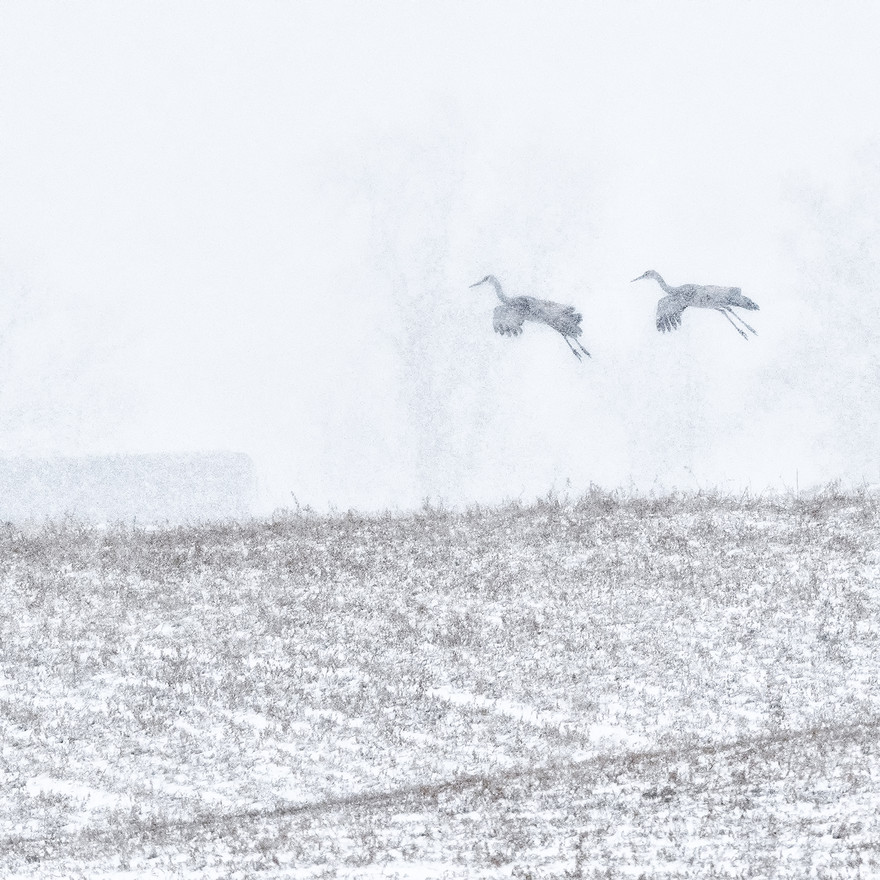Sandhill Cranes ( Grus canadensis) used to be uncommon spring and fall migrants in Norfolk County, my home, which is located in Southern Ontario, Canada. Over the last few years, however, their numbers have been steadily increasing. They now breed in the wetlands of the county and gather in numbers during the autumn months, feeding on corn stubble fields before migrating south for the winter. Last autumn was unseasonably mild. Moderate weather extended well into December, allowing a larger number of cranes to tarry than is usual. In 2017 up to 1500 cranes were counted in the annual Long Point Christmas Bird Count.
When this image was taken in late January 2018, we had finally experienced an extended period of sub-zero temperatures. As snow was covering the corn fields, making routine access to food difficult, most of the birds had departed. On this particular day it was bitterly cold with fierce winds and falling snow; but I knew that patches of stubble could be exposed by the wind during a blizzard, creating a small chance that cranes might still be present.
Driving along a gravel road adjacent to their regular feeding location, I spotted a group of a dozen cranes quite close to the road. From previous photographic encounters I knew that falling snow can act as a kind of blind, calming these cautious birds and allowing more sustained encounters.
The photo session that includes this image extended for 15 minutes or more. The birds slowly drifted away as they became aware of my exit from the car, but in a manner that indicated no stress at my presence. Eventually, individuals and groups of varying numbers took flight, some to disappear into the distance, others to land within view, but further away.
This image was taken as a pair of Cranes was preparing to land in the distance. Sandhill Crane landing behaviour is characterized by an extension of their legs and slowing flight as they brake and descend. These moments offer some predictability, and provide an opportunity to freeze the birds in flight.
During this photographic session, I used an Olympus 300 f4 pro lens with 1.4 extender on an Olympus OMD5-2 at ISO 800. My settings were (around f/8 in low burst tracking mode).
I set out during the inclement weather, hoping to photograph Cranes, for a number of reasons. Vehicular traffic is lighter and other (more sensible) people are usually few in number. Background clutter and visual distractions are minimized. Colours are muted. Contrast and dynamic range are softened. Aesthetically, the pointillistic effect one can achieve with a fast shutter speed during a snowstorm adds tremendous visual interest.
In post production, inspired by the weather conditions, I emphasized the high key, desaturated look. I rounded the margins of a background barn to create a softer edged, more organic form, in keeping with the natural scene. The photograph was significantly cropped for a tighter composition.


